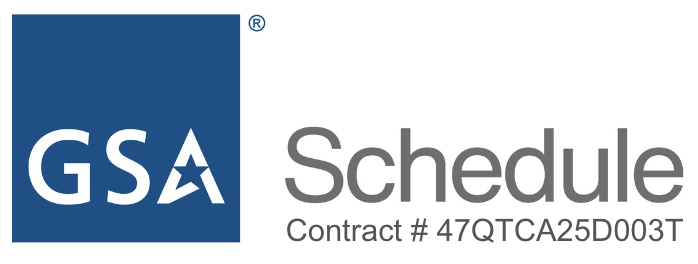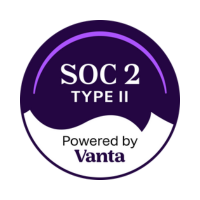
The American public service workforce is in the midst of a profound crisis. Amid sweeping restructuring, leadership turnover, and budget shifts, the human toll is growing—and the impact extends beyond agencies to contractors, nonprofits, and entire communities.
In May, during Mental Health Awareness Month, Cabana hosted a Virtual Leadership Forum exploring this crisis through both data and lived experiences. The panel featured three leaders with firsthand insight into the intersection of organizational change and human well-being:
• John Boerstler, Executive Vice President of Public Sector at Ipsos and former Chief Veterans Experience Officer at the U.S. Department of Veterans Affairs
• Dr. Benjamin Miller, clinical psychologist and nationally recognized health policy expert
• Dr. Kristin Saboe, Head of Employee Voice at Google, Army veteran, and organizational psychology expert
Together, they highlighted urgent workforce challenges and shared actionable strategies to boost morale, resilience, and performance.
The Data Behind the Crisis
John Boerstler shared exclusive Ipsos polling data that reveals a decline in federal workforce morale. Today, only 36% of federal employees report being satisfied in their roles—a sharp drop from 66% in recent years, marking a staggering 40% decline in just a matter of months.
At the heart of this crisis is a growing lack of trust. Boerstler noted that 63% of federal workers doubt that deferred resignation offers will be honored, signaling a deep erosion of confidence in institutional promises. Meanwhile, 18% say they’re likely to leave voluntarily within the year, many citing concerns about feeling “bullied” by new leadership or fearing termination due to office closures and agency restructuring.
“This isn’t just workplace dissatisfaction,” Boerstler stressed. “It’s a full-blown morale crisis—a breakdown of trust in the very institutions these employees have often dedicated their careers to.”
The Ripple Effect Beyond Government
The impact reaches well beyond federal employees. Small businesses, contractors, and community organizations tied to government programs are also facing disruption. When public sector workers struggle, entire ecosystems suffer.
Dr. Saboe described this as “accelerating convergence”—a collision of political shifts, tech disruption, and changing views on work and identity. “The human component often gets lost,” she noted, “because we can’t keep up with the pace of change.”
The result is a high-risk environment where constant transformation leaves people without stable footing.
The Mental Health Paradox
Despite the crisis, there's a silver lining in how people approach mental health conversations. Ipsos data revealed that 77% of employees now feel comfortable if a coworker discusses mental health concerns with them—a significant shift largely attributed to shared experiences during COVID-19.
However, this openness comes with significant barriers:
• 42% worry their career would be negatively impacted by discussing mental health concerns at work
• Nearly half fear judgment from colleagues if they share mental struggles
"We've normalized talking about mental health with others, but we still have structural and cultural barriers that prevent people from seeking help for themselves," Dr. Miller observed.
Understanding What Drives Employee Engagement
Dr. Saboe shared a framework for understanding employee motivation, describing engagement as a “three-legged stool” made up of compensation, benefits and flexibility, and purpose. Most employees have two of the three; few have all.
Public sector workers have traditionally relied on job security and mission-driven purpose. But when security disappears, Saboe explained, “you’re trying to balance on a one-legged stool”—unstable and unsustainable.
For many federal employees, this isn’t just job uncertainty—it’s an identity crisis. When both security and meaning vanish, they’re forced to reevaluate their entire relationship with work.
Flexibility as Mental Health Currency
Dr. Miller discussed his concept of flexibility serving as "mental health currency." The ability to control when, where, and how work gets done proved to be a crucial factor in managing stress and maintaining performance during uncertain times. This insight has particular relevance as organizations reconsider remote work policies and office requirements in the post-pandemic era.
The Awareness Gap Crisis
A critical finding from the research was the prevalence of what the panel called "awareness blind spots"—employees simply don't know what mental health resources and benefits are available to them. This gap between available support and employee knowledge creates situations where people suffer while help sits unused.
"It's insufficient just to offer programs," Dr. Miller emphasized. "We need to actively educate people about what's available and give them the skills to help each other when challenges arise."
Strategic Leadership Responses
The forum identified five critical strategies for leaders navigating this challenging environment:
1. Make Mental Health Support Visible and Accessible
Move beyond generic wellness announcements to provide specific, actionable information about available resources. Regularly communicate how employees can access Employee Assistance Programs, mental health days, and flexible work arrangements. The goal is eliminating the awareness gaps that prevent people from getting help.
2. Embed Well-being into Organizational Planning
Stop treating mental health as separate from business strategy. Integrate well-being considerations into every major organizational decision, from workforce reductions to policy changes to restructuring efforts. When mental health is an afterthought, the human costs multiply exponentially.
3. Leverage Flexibility as a Retention Tool
Recognize that flexibility in work arrangements serves as powerful stress mitigation. Small gestures of autonomy—like meeting-free afternoons or flexible start times—can have outsized impacts on employee well-being and organizational stability.
4. Lead with Calm, Clear Communication
Ground all communications in facts rather than spin. When leaders acknowledge challenges honestly while providing clear direction and support options, they create psychological safety that enables honest conversations about struggles and needs.
5. Build Skills, Not Just Awareness
Equip managers and employees with concrete skills to recognize mental health challenges and respond effectively. Awareness campaigns aren't enough; people need practical tools to help themselves and their colleagues navigate difficult periods.
Moving Forward
The path forward demands urgency and sustained commitment. This isn’t a challenge solved by quick fixes—it requires ongoing investment in employee well-being as a core driver of organizational success.
The good news? We’re not starting from scratch. The research is clear, the conversations are underway, and forward-thinking leaders are already taking action. Prioritizing well-being unlocks the resilience, innovation, and engagement needed to thrive through uncertainty.
Organizations that lead with care won’t just endure—they’ll emerge stronger, more connected, and ready to deliver on their mission. Now is the time for leaders to act with purpose, knowing that investing in people is the smartest strategy for lasting impact.
More for Your Mental Toolbox

Overwhelmed to Organized: 6 Tools to Improve Your Executive Function
Struggle with procrastination, distractions, or time blindness? Executive function skills like working memory, flexibility & self-control shape success—but they can be improved!
Read more →
Sleep Hygiene 101: 8 Tricks to Snooze Smarter
Good sleep is vital for mood, heart health, and overall well-being. Improve sleep hygiene by sticking to a schedule, avoiding late eating, caffeine, and alcohol, exercising, and creating a calming bedtime routine.
Read more →








